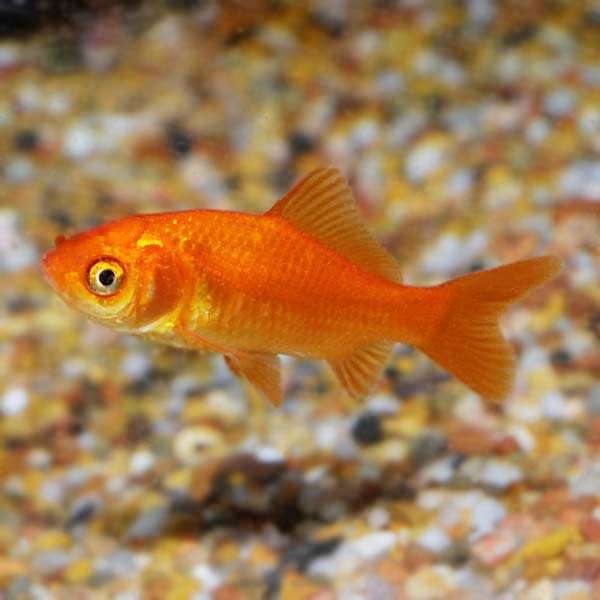
Size
2-4 inches and, in some cases, up to 10 inches.
Physical Appearance and Characteristics
Long and stocky, the Carassius auratus is a fish. Not everyone has the well-known “golden” tint. They can be found in a wide range of colors in the wild, from yellow to virtually white to olive green. It has a big dorsal fin with 15–21 rays and a robust serrate spine linking the dorsal and anal fins. Goldfish are gregarious creatures who frequently congregate in huge groups known as schools and have similar dietary preferences. A goldfish’s response to seeing itself in a mirror could be compared to a person’s. Goldfish have learned these characteristics from the social and lone activities of native carp.
Habitat
For goldfish aquariums, a temperature range of 66 to 73 degrees Fahrenheit is recommended. Goldfish also do well in soft water, which is more alkaline than acidic. For a goldfish, the ideal pH range is between 7.0 and 7.4. Goldfish flourish in a tank with a landscape.
Keeping as Pet

- Care
The following are some important factors should think about before getting a goldfish.
- Tank Size
Common goldfish may live in nearly any bowl, aquarium, or pond that is at least one gallon in size, but they do best in larger spaces. More regular water changes will be required to maintain water quality in smaller aquariums. Additionally, larger areas enable a more stimulating workplace.
- Water Temperature
Although common goldfish prefer water temperatures between 65 and 75 degrees Fahrenheit, they can thrive in a wide temperature range. If there is a hole in the ice that they can pass through to receive oxygen through, they can survive in temperatures below freezing. Goldfish will go into a state of torpor, a kind of semi-hibernation, in cold water, often around 50° F. Since their metabolism drastically slows down while they are in torpor, they typically eat very little to nothing at all. While goldfish are in torpor, it’s critical to maintain proper oxygen circulation in the water.
- Substrate
Small gravel is typically not advised for goldfish since it can become caught in their teeth in large enough chunks to cause injury or death without intervention from a human. For simplicity of cleaning, some goldfish keepers prefer bare bottom setups, however aquarium sand is also a suitable option. If purchased river rocks are carefully cleaned before use and are smooth with no jagged edges to minimize harm to the fish, they can be utilized for both indoor and outdoor installations. To stop the spread of parasites and disease, it’s crucial to avoid obtaining pebbles or plants from nearby waters.
Table





